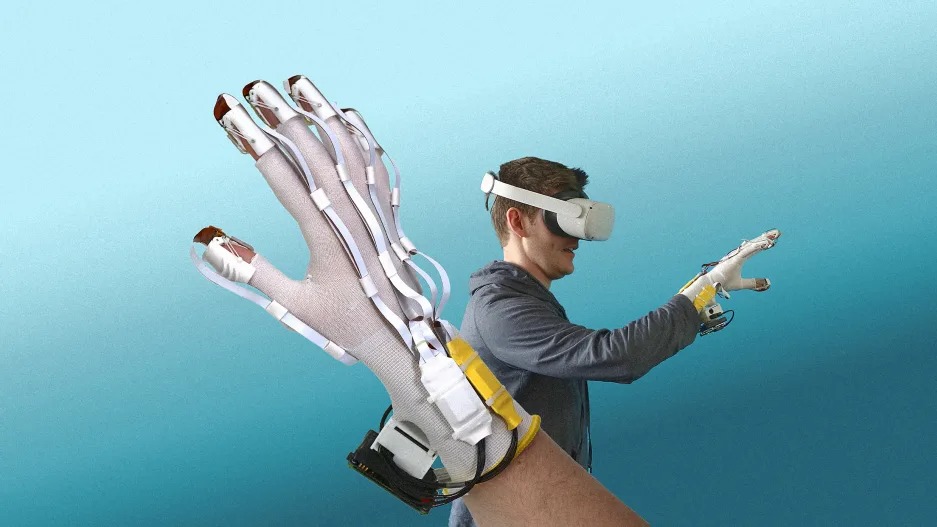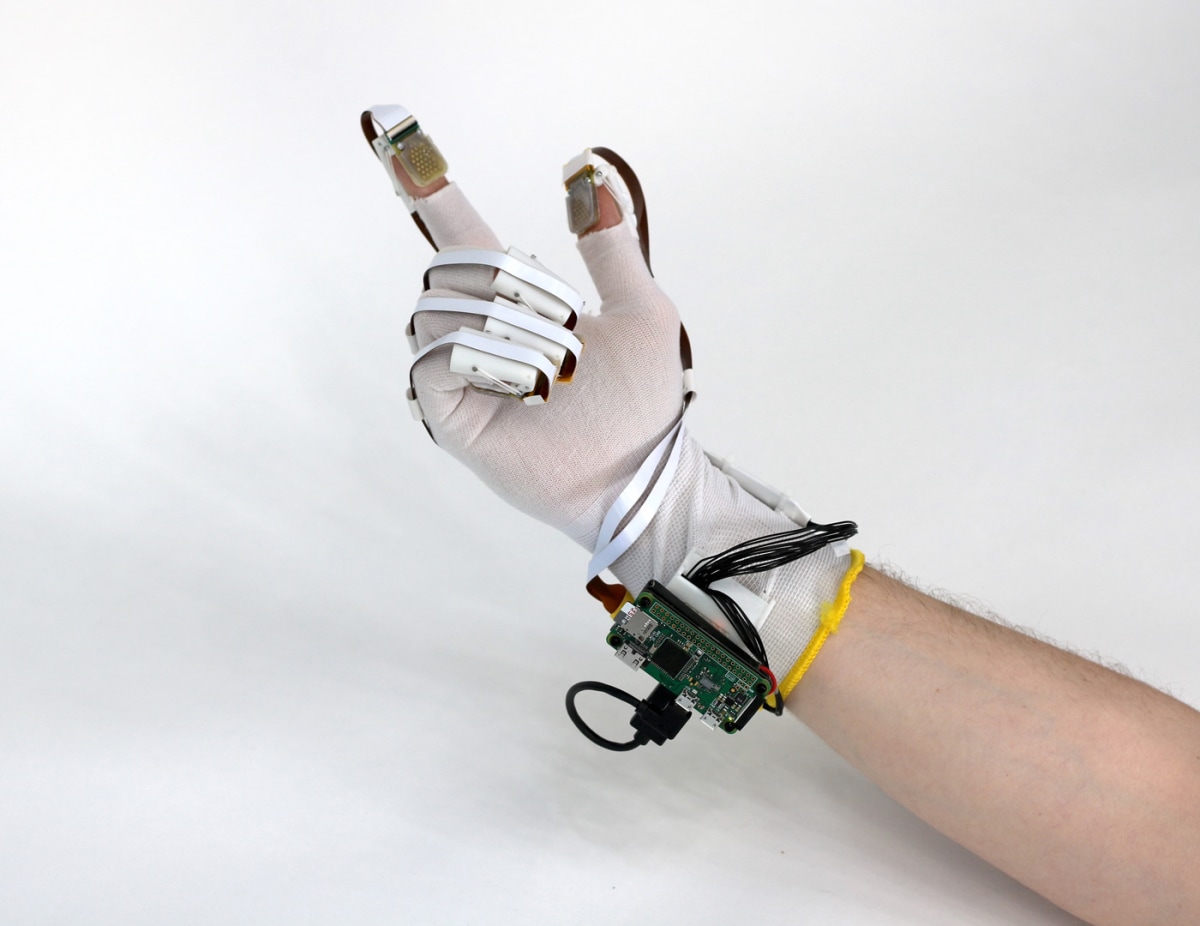- | 8:00 am
This groundbreaking tech could finally bring a sense of touch to virtual reality
A wireless glove overcomes the clunk and bulk of haptic technology.

In virtual reality there is much to be seen, but most of our other senses are left wanting. Ever since the concept gathered mainstream attention in the 1990s, it’s been primarily experienced through the eyes, inside a headset that transports the user into an all-encompassing digital realm. But what you see in a virtual reality headset is pretty much all there is—controllers enable a user to move around or play games or perform training activities, but the experience is largely one of changing one’s view from the real world to a new digital landscape.
Now researchers in the dynamic space of human-computer interfaces have come up with an effective, realistic, and affordable way to bring the sense of touch to this highly visual medium.
The breakthrough is a haptic glove that provides virtual reality applications with a realistic sensation of physical contact. Developed by the Future Interfaces Group at Carnegie Mellon University, the technology has been spun out into a company, Fluid Reality, Inc., that stands to upend the race to make touch a realistic part of virtual reality.

“If we want to do science in space, on the moon, under water, we’re going to have to have ways to interact over long distances and the sense of touch is really important to doing that efficiently and correctly,” says Chris Harrison, head of the Future Interfaces Group.
Until now, haptic systems for virtual reality have been large and somewhat impractical devices. Meta has invested heavily in CEO Mark Zuckerberg’s vision of a virtual reality-like “metaverse” where both work and play happen in an immersive digital environment, and that’s included a haptic glove connected by a long bundle of cords to what looks like a life support device. A startup called Haptx has developed a similar haptic glove device that requires the user to wear a backpack of gadgetry to make it all work. (Apple’s Vision Pro augmented reality headset has no glove device yet, but it’s expected to be an obvious add-on to that technology.)
The size of these haptic systems relates to the way their gloves provide that sense of touch. Compressed air is used activate tiny actuators within the gloves, pushing textures onto the fingertips and mimicking the tactility of what’s being seen and touched in virtual reality. But using compressed air requires large air cannisters, big bundles of tubes, and a lot of electricity.
“We were eyeing up what these startups were doing, what Meta was doing and we were like, this is not the way forward. There’s just no way to miniaturize a compressed air system. It’s always going to be in a backpack no matter how small you make it,” Harrison says. “They’re just chasing up the wrong tree, in our opinion.”
The system Harrison’s group came up with uses fluids instead of air to move the tiny actuators in its fingertip haptic arrays. The group developed a system that moves fluids into these actuators through tiny pumps that are activated with a small electrical charge. They require only a small battery and can be built by using existing hardware typically used in the creation of printed circuit boards (PCBs).
“We literally just shipped it out to a standard PCB manufacturer,” Harrison says. “We got these things back, assembled our pumps, and it worked. And that just means that we could bring the cost down two or three orders of magnitude compared to what other people were doing.”
Fluid Reality estimates the cost per glove is currently less than $1,000, compared to $5,500 for a Haptx system or more than $15,000 for Meta’s system.
A video explaining the Fluid Reality technology shows a variety of early stage applications for such a device, from manipulating physical objects in virtual space, differentiating textures of different objects, and even practicing a violin. Harrison says a lightweight haptic glove could make it possible for doctors to perform telesurgery, technicians to defuse bombs remotely, and scientists to use space-traveling robots to perform physical tasks on other planets.
Before that, though, this kind of technology will likely end up in the entertainment-centric side of the virtual reality space. “Most of the VR headsets that are being sold today are really for casual gamers or novelty early adopters. Entertainment’s a primary use case,” Harrison says. “At least for the foreseeable future.”

The technology behind Fluid Reality’s glove was developed over the course of a year by a five-person team. It was recently presented publicly at the ACM Symposium on User Interface Software and Technology in San Francisco, a major human-computer interfaces conference. Harrison says the concept has gathered significant interest.
“There’s already companies in discussion for using the technology for gloves,” Harrison says. “Can’t say any names, unfortunately, but you can probably extrapolate which companies might already be invested in this.”
Whether that means Meta’s clunky glove gets a streamlined revision remains to be seen, but Harrison is confident this new approach to powering haptics will at least open the door for further advancements. “I think this will spur research in this technique,” he says.





































